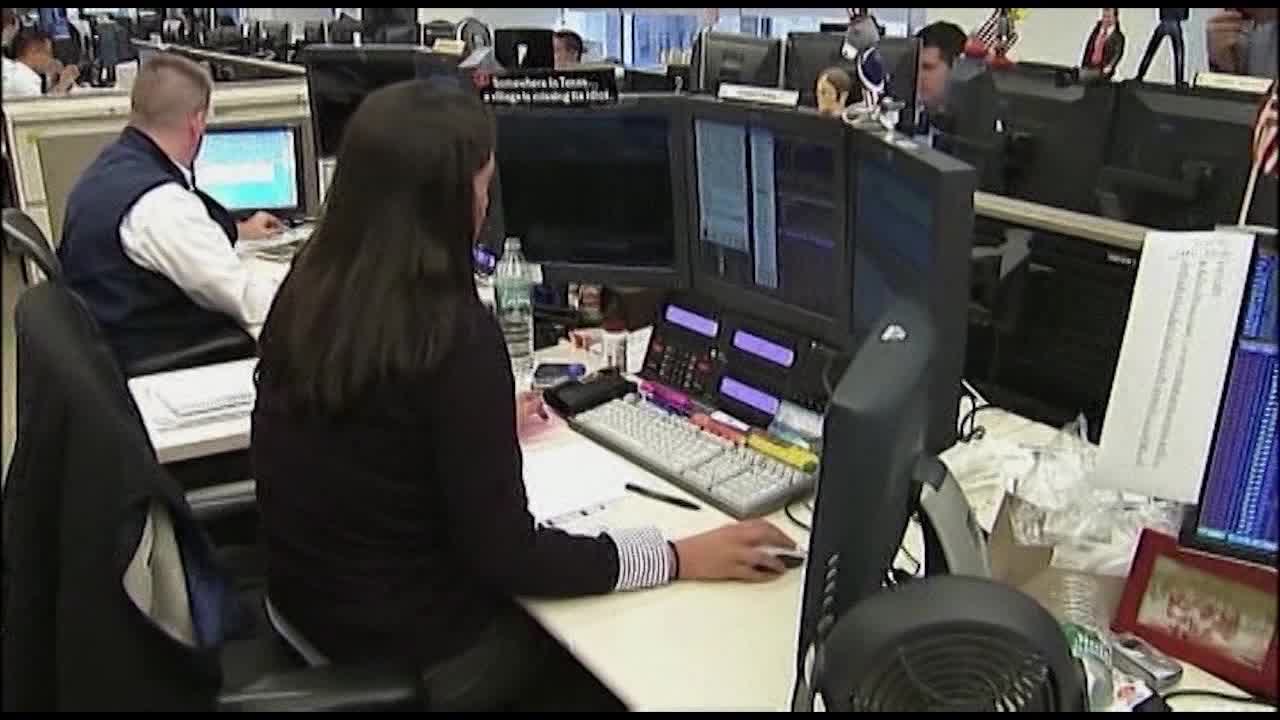Crypto
Demystifying bitcoin: a closer look at cryptocurrency ETFs

Let’s peel back some of the mystery around the recent news propelling bitcoin into the spotlight – the new crypto exchange-traded funds (ETFs).
Cryptocurrency is digital money secured by a specific type of public ledger called blockchain. Without a governing body like a government, a public digital ledger transparently records peer-to-peer transactions. Bitcoin, launched in 2009, became the first widely adopted cryptocurrency. Because the number of coins is limited, bitcoin has become a tempting speculative investment.
A historic milestone: the approval of bitcoin ETFs by the SEC
On January 10th 2024, the U.S. Securities and Exchange Commission (SEC) marked a significant milestone in the cryptocurrency world with the approval of 11 spot bitcoin exchange traded funds (ETFs). This includes offerings from fund titans BlackRock and Fidelity. This move is set to potentially transform the landscape of cryptocurrency investing and open new opportunities for traders.
To understand the impact of this development, it is essential to grasp what spot ETFs are. A spot ETF is a type of fund that directly tracks the current, or ‘spot’, price of an asset and in this case, bitcoin (BTC). Unlike futures-based ETFs, which are tied to contracts betting on the future price of an asset, spot ETFs are backed by the actual price of the asset itself.
Boosting confidence in Bitcoin investments
This means that when you invest in a spot bitcoin ETF, the fund purchases actual bitcoin, and the value of your investment fluctuates with the real-time price of bitcoin in the market. These bitcoins are held by a custodian. Coinbase is the custodian for eight of the 11 spot bitcoin ETFs.
The introduction of spot bitcoin ETFs is a game-changer because it provides a bridge between the traditional financial world and the burgeoning crypto market. For traders, this means easier access to bitcoin investments without the complexities and security concerns of managing a digital wallet or trading on a cryptocurrency exchange.
Liquidity, price stability and broader adoption
One of the most significant advantages of these ETFs is the potential for increased liquidity and price stability. As more institutional and retail investors gain exposure to bitcoin through these funds, trading volumes are expected to rise. This could lead to a more stabilised market with less price volatility, which is beneficial for traders who seek to capitalise on incremental price movements.
Moreover, spot bitcoin ETFs could also lead to broader adoption and acceptance of bitcoin as a legitimate asset class. With the SEC’s stamp of approval, investor confidence in bitcoin could grow, potentially leading to increased demand and, consequently, higher prices.
This parallels the journey of gold ETFs, which increased gold demand substantially and reduced volatility long term.
Bitcoin ETFs vs. futures contracts
Bitcoin ETFs make investing in bitcoin much more accessible to casual traders and retail investors. While futures contracts based on the price of bitcoin require oversight of settlement dates and delivery complexities, an ETF trades like a stock. It simply tracks an underlying index price — in this case, bitcoin spot price.
The bitcoin ETF offers simple exposure tied to bitcoin’s price swings without needing to directly buy crypto from an exchange or wallet and take on the hassles of storage and security. You can buy and sell the ETF seamlessly like stocks from a standard brokerage account.
The ETF format opens the door to mainstream investment funds, retirement accounts like 401ks, and amateur stock dabblers — not just specialised futures traders. This instantly widens the pool of potential bitcoin investors dramatically.
The ETF coincides with another important moment for bitcoin prices: halving day.
Bitcoin halving day explained
Bitcoin mining is how new coins are created and verified transactions are added to the blockchain ledger. Miners compete to solve complex maths puzzles and earn rewards for each block added. Originally, successful bitcoin miners were rewarded 50 BTC per block, an incentive for mining activity. However, bitcoin has a hard cap of 21 million total coins that can exist.
To ensure controlled supply until the cap is reached, mining rewards decrease by 50% every 210,000 blocks mined. This pre-set halving of mining rewards happens approximately every four years, with the next halving day estimated to be in April 2024.
When halving days reduce the supply of new bitcoins flowing in, simple economics kicks in. All else being equal, when supply drops but demand keeps growing, prices tend to rise. The anticipation of this can spur speculative investing leading up to the halving day.
Impact of halving day on supply and prices
Even without the ETF news, bitcoin’s next ‘halving day’ in April 2024 suggests this built-in increasing scarcity could drive prices up in the coming years.
Of course, cryptocurrencies still come with plenty of risk and uncertainty. But the possibility of more investors and financial giants embracing bitcoin and its derivatives indicates prices could continue climbing. For intrepid investors, crypto ETFs offer a simpler way to stake your claim!

Crypto
Venezuelan Opposition Politician Warns of Crypto Use for Money Laundering

Venezuela is reportedly expected to increase its use of cryptocurrency when the United States reimposes oil sanctions on the country beginning June 1.
A Venezuelan opposition politician, Leopoldo Lopez, and a national security leader at New York-based blockchain data firm Chainalysis, Kristofer Doucette, released a report Monday (April 29) saying that democratic governments should set up structures to combat money laundering, Reuters reported Monday.
Lopez and Doucette said in the report that Venezuelan President Nicolas Maduro has attempted to use crypto for “moving illicit proceeds into the international financial system,” per the Reuters report.
Chainalysis reported in February that money laundering tactics are changing, with more sophisticated crypto criminals using bridges and mixers.
It’s possible that crypto criminals are diversifying their money laundering activity across more nested services or deposit addresses to better hide it from law enforcement and exchange compliance groups and to lessen the impact of any one deposit address being frozen for suspicious activity, the company said at the time.
“As a result, fighting crypto crime via the targeting of money laundering infrastructure may require greater diligence and understanding of interconnectedness through on-chain activity than in the past, as the activity is more diffuse,” Chainalysis said in a report on crypto crime.
In March, the Financial Action Task Force (FATF) recommended that jurisdictions need to get a stronger grasp on the money-laundering and terrorist-financing threats posted by crypto. The FATF added that jurisdictions should license or register virtual asset service providers (VASPs) and carry out reviews of their business practices, products and technology.
Also in March, the United States sanctioned 13 Russia-linked FinTechs for allegedly using cryptocurrency to evade bans.
The sanctions were administered by the Treasury Department’s Office of Foreign Assets Control (OFAC) and targeted FinTechs including Atomaiz, B-Crypto, Masterchain, Veb3 Tekhnologii and Veb3 Integrator as well as Tokenhurt, a Cypress-based company that is also majority owner of Atomaiz.
“Russia is increasingly turning to alternative payment mechanisms to circumvent U.S. sanctions and continue to fund its war against Ukraine,” Brian Nelson, undersecretary of the U.S. Treasury for terrorism and financial intelligence, said in a March 25 announcement.
Crypto
Exploring Blockchain and Cryptocurrency's Role in Gaming's Future

The evolution of the gaming sector is embracing a significant shift with the introduction of blockchain and cryptocurrency technologies. This shift promises to redefine gaming dynamics, moving beyond enhanced graphics or immersive playing experiences.
It is true that experts tend to agree that the focus now includes transforming game playability, ownership rights and economic prospects within games. The crucial intersection between innovative technology and its practical implications is key for understanding gaming’s future direction.
The convergence of blockchain and gaming is not merely a passing trend but a fundamental shift in how people perceive and interact with games. It opens up new avenues for player engagement, ownership and monetization, blurring the lines between virtual and real-world economies.
As more developers and players embrace this technology, it has the potential to revolutionize the entire gaming landscape.
Deciphering Blockchain’s Potential in Gaming
Blockchain technology introduces a decentralized mechanism for validating various transactions, which, when injected into gaming, promises enhanced security and the possibility of genuine digital possession.
This feature allows players potentially to own in-game assets, characters or even segments of the game’s universe. Early adopters, such as Cryptokitties and Axie Infinity, have already demonstrated the potential, enabling players to acquire, nurture or engage with distinct digital entities, each authenticated and owned through blockchain.
Integrating Cryptocurrency within Virtual Game Worlds
Gaming and cryptocurrency represent a perfect synergy. In-game economies are inherently intricate, facilitating the trade of goods, services and virtual currencies. The incorporation of cryptocurrencies streamlines these exchanges, making them more secure, immediate and globally accessible, eliminating concerns over fluctuating exchange rates and transaction costs.
This integration, however, is not without its challenges, including a steep learning curve and the unpredictable nature of cryptocurrency values. Despite these obstacles, the gaming community’s growing familiarity with cryptocurrency is turning these challenges into exciting gameplay components.
Forecasting Technology’s Influence on Gaming
Technology enthusiasts project a vibrant future for blockchain and cryptocurrency within the gaming industry. As virtual and augmented reality technologies continue to advance, their amalgamation with blockchain could spawn novel gaming experiences.
Players might navigate through digitally constructed realms, owning or trading parts of these spaces, secured and validated by blockchain.
The prospects for creating more immersive, interactive and economically beneficial games are vast. However, this enthusiasm also carries a note of caution, stressing the importance of balance and preserving the joy found in gaming.
Behind the Scenes: The Technical Side of Blockchain Gaming
Developing a game based on blockchain technology demands a blend of expertise in both game design and blockchain’s technicalities. The challenge lies in employing this technology while maintaining game engagement and ease of access.
Leading games in this niche have managed to integrate sophisticated technology subtly, concentrating on enriching the gaming experience with blockchain’s advantages. As such games grow in popularity, they chart the course for a novel gaming era, marked by player empowerment and inventive gameplay designs.
The integration of blockchain and cryptocurrency is just beginning to unveil its impact on the gaming industry. Platforms like Techopedia continue to be crucial in demystifying these technologies, enabling gamers and developers to harness the benefits of this new era.
The future of gaming appears bright, laden with opportunities and discoveries at the nascent stages of this digital voyage and with the rise of Artificial Intelligence (AI) and Virtual Realities (VR), who knows what the future holds?
Crypto
Solana Advances Congestion-Alleviating Central Scheduler Feature to Testnet – Altcoins Bitcoin News

-

 News1 week ago
News1 week agoIs this fictitious civil war closer to reality than we think? : Consider This from NPR
-

 World1 week ago
World1 week agoShipping firms plead for UN help amid escalating Middle East conflict
-

 Politics1 week ago
Politics1 week agoICE chief says this foreign adversary isn’t taking back its illegal immigrants
-

 Politics1 week ago
Politics1 week ago'Nothing more backwards' than US funding Ukraine border security but not our own, conservatives say
-

 News1 week ago
News1 week agoThe San Francisco Zoo will receive a pair of pandas from China
-

 World1 week ago
World1 week agoTwo Mexican mayoral contenders found dead on same day
-

 World1 week ago
World1 week agoBrussels, my love? The EU single market is not sexy enough for voters
-

 Politics1 week ago
Politics1 week agoRepublican aims to break decades long Senate election losing streak in this blue state













